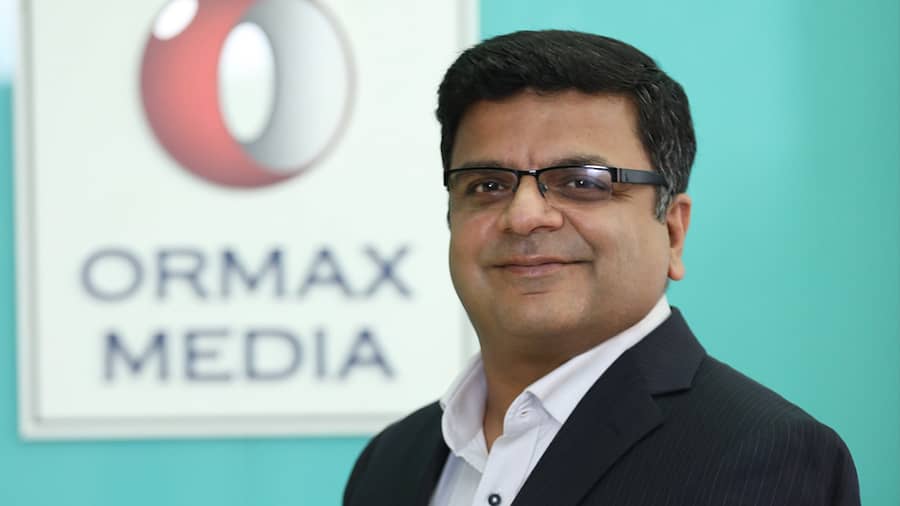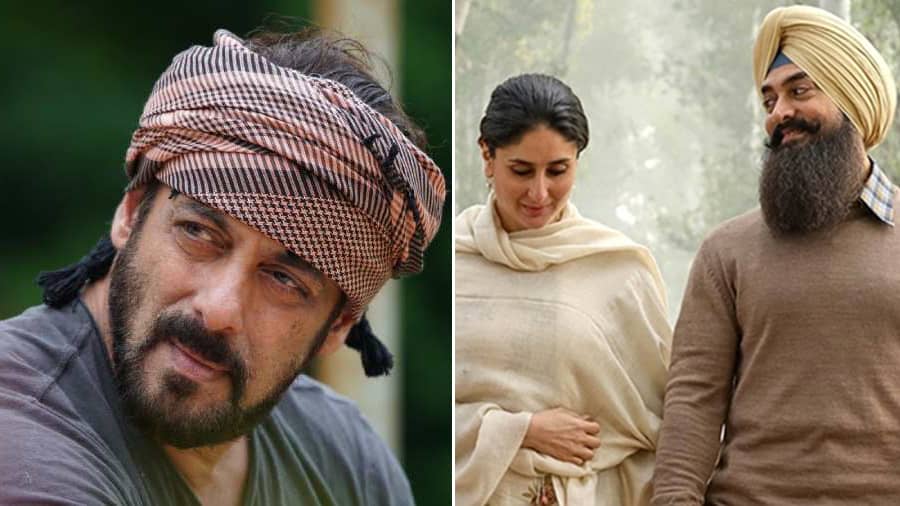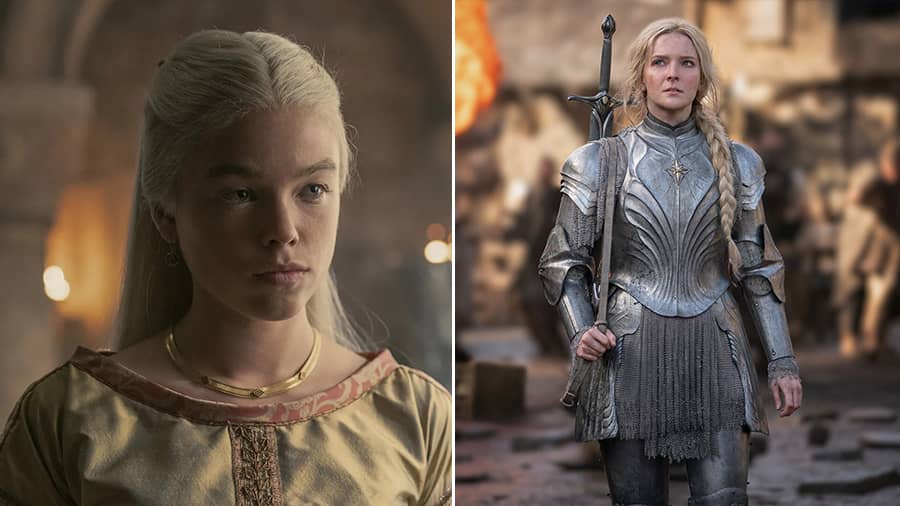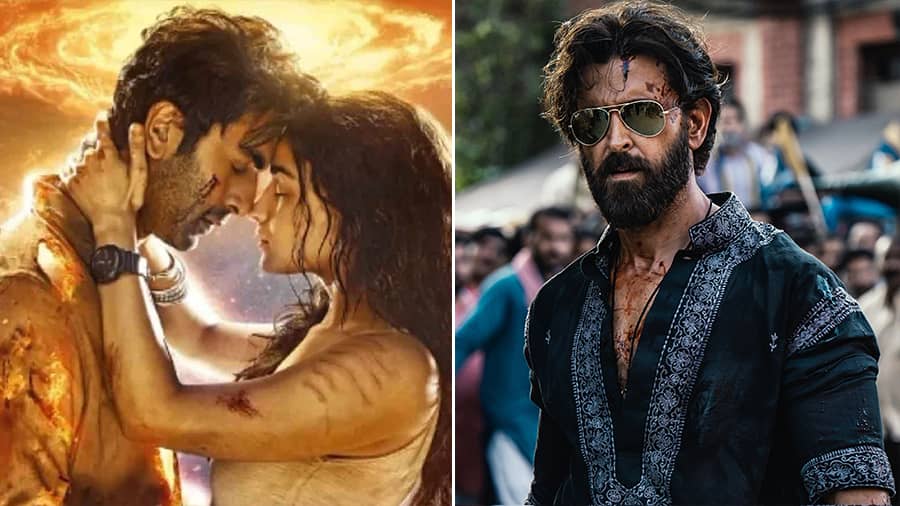“Entertainment, entertainment, entertainment” was how Vidya Balan’s Silk had described what makes a film work in the 2011 blockbuster The Dirty Picture. More than a decade later, Ormax Media is changing that formula to: “Data, data and data”. Not just for films, but for television shows as well as OTT.
Founded in 2008 as India’s “first specialised insights consulting firm for media and entertainment”, Ormax Media is a household presence in the content industry today, from analyses reports of the biggest production houses to Alia Bhatt’s Instagram stories to Koffee with Karan.
In an exclusive chat with The Telegraph Online, Shailesh Kapoor, CEO and co-founder of Ormax Media, explained how data is changing the content landscape in India.

Shailesh Kapoor, CEO and co-founder of Ormax Media Ormax Media
If you had to describe the work Ormax Media does in brief, how would you explain it? Which are the entities and organisations that currently use Ormax research and/or data?
Shailesh Kapoor: Our aim is to empower media and entertainment companies with insights related to content and marketing to help them make sound financial decisions when it comes to their content and marketing strategies.
We’ve been there for 14 years now, having started with television. So all the big networks have worked with us, including Star, Sony, Zee, Viacom and their regional channels. We entered the theatrical business in 2010 and have been working with several major studios and production houses — not only in Bollywood, but also in the South. More recently, we’ve worked with the likes of Disney+ Hotstar, Prime Video, Zee5, Sony LIV, among others, in streaming.
Which are the main verticals Ormax is focusing on right now? And how does each one work?
Shailesh Kapoor: In terms of verticals, about 20 to 25 per cent of our work revolves around high-touch consulting, where we try to give tailor-made solutions to our clients to help them solve specific business problems. A large chunk of our work involves content testing, which is about assessing scripts, trailers, posters, songs and the final product in terms of a show, web series or a film.
We have a panel of more than one lakh viewers from across India from which we invite people to consume content and assess it. Their feedback is then used to predict the likelihood of a particular piece of content succeeding. The results of content testing are used by the makers at the script stage to alter or revamp a script and at the final product stage to see if they want to make any edits, reshoot certain portions or market the content differently.
Then we have another vertical in the form of tracking, where we track theatrical releases in Hindi, Tamil, Telugu, Malayalam, Kannada, Bengali, Marathi and Punjabi by focusing on the kind of buzz and traction that is being generated by a film’s trailer and pre-release content. The tracking helps us predict what sort of an opening a film will get at the box office.
For instance, we can predict that Brahmastra (releasing on September 9) should have an opening day collection of around Rs 20 crore, while the same for Vikram Vedha (releasing on September 30) should be in the region of Rs 12 crore.
How was the idea behind Ormax Media born? How easy was it to integrate data into the media and entertainment industry?
Shailesh Kapoor: I spent nine years working in television before starting Ormax Media, and the main idea was to create specific tools for research and assessment that have been customised for the media and entertainment industry. Back then, most research tools were oriented for understanding the FMCG market and nobody in India had looked at using data to arrive at specific insights for media and entertainment. People used to think that you can’t predict what will or won’t work in entertainment. That’s because they were applying FMCG tools and ways of thinking to content, which wasn’t the right way of going about it. I understood that there was a need-gap and a market for the kind of work Ormax was going to do. Internationally, there were enough examples to be reassured that this kind of a model would work.
Television, which had long been corporatised, was quite receptive to Ormax’s ideas, but we did face resistance from the film industry. Some had the impression that you can’t tell a creator how to create, while all we were trying to do was enhance creators and allow them to make more informed decisions without interfering with how they calibrate their creativity. However, I’m glad to say that such mindsets have changed over time and now we’re in a position where anyone who has worked with Ormax once, has usually stuck around.
Having analysed so many films over the years, do you have a recipe for box office versus OTT hits that you can recommend to filmmakers?
Shailesh Kapoor: The divergence between what works at the box office versus what works on OTT has largely emerged in the last two years, during the pandemic. Both the industries are changing quickly and we obviously don’t have all the answers. But from what we’ve observed and analysed, it seems that stories that are more emotional, dramatic and intimate are better candidates for OTT. As for the box office, films driven by action, larger-than-life characters and VFX tend to do better. Having said that, we’ve also seen films like Gangubai Kathiawadi and Bhool Bhulaiyaa 2 have great box office runs, so a lot of what works or doesn’t also depends on a case-to-case basis.
However, there’s no denying that cinema-goers have become more selective in the last few years. They don’t want to go to the theatres to watch any kind of film and are more careful about what they spend their money on. Another thing to note here is that a lot of the films coming out today were essentially made or thought of pre-pandemic. The market has naturally changed since, which might explain why they haven’t done as well as expected.
The impact of superstars has also been dwindling faster in Bollywood than in the South

Presence of superstars like Aamir Khan and Salman Khan no longer guarantees box office success, feels Kapoor TT Archives and Laal Singh Chaddha
Of late, there has been a surge in Tamil and Telugu films and their national popularity. The ‘Ormax Stars India Loves’ report also shows actors and actresses from South India dominating. Is it fair to say that there has been a power shift away from Bollywood to the South, especially Telugu films?
Shailesh Kapoor: There’s definitely been a power shift from Bollywood to the South. That’s not an exaggeration. What is an exaggeration is saying that Bollywood is dying. Every industry goes through phases and it’s the same for Bollywood, which will probably take another couple of years to return to where it used to be. Hindi box office made up 43 per cent of the total box office in India in 2018, while today it’s at 34 per cent, out of which 41 per cent is driven by Hindi versions of Tamil and Telugu films. So if you take that into account, Bollywood’s share has practically been halved in the last four years. One reason for this is that the Hindi audience is heterogeneous, divided across many more states and is beginning to develop more diverse tastes, many of which are being explored on OTT. Over in the South, with their culture of single screens and a far more homogenous taste, it’s easier for certain kinds of films to do well.
The impact of superstars has also been dwindling faster in Bollywood than in the South. Laal Singh Chaddha is a good example of that. Similarly, till a few years back, we could be certain that any Bollywood film with Salman Khan, irrespective of its trailer performance, would have a good opening, even if it struggled after that. No such guarantees apply today. For Hindi films to work, you need a good story, an idea or something that makes the film different. Bollywood audiences are not as forgiving as they used to be.
From a broad standpoint, if you had to identify three ways in which the consumption of media and entertainment has changed in India over the last five years or so, what would they be and why?
Shailesh Kapoor: One major change has been that people want to go back to their roots and see stories and characters that are more rooted and more Indian. The whole ’90s formula of shooting overseas and focusing on NRI stories that held a lot of appeal in a post-liberalised India doesn’t hold anymore.
The second thing is that audiences now want cleaner and more wholesome content on streaming, because they want to watch with their families. The trend of having extremely edgy content on streaming, laced with expletives and violence, is disappearing.
The third change would be the openness towards franchises and the desire to experience entire universes with character linkages that’s a direct legacy of Marvel. Audiences are definitely gravitating towards more franchise-based content, which is where a lot of overseas content has been thriving, including shows like Money Heist and Squid Game. This has been boosted by the fact that a lot of these shows are also available in local languages, and not just in English.
Bollywood, on the other hand, doesn’t really have a universe of any sort — apart from maybe Rohit Shetty’s cop universe — and plain sequels don’t really replicate the franchise or universe feel.
House of the Dragon should do much better than The Rings of Power

Speaking of franchises, between House of the Dragon and The Rings of Power, which do you expect to fare better with Indian audiences?
Shailesh Kapoor: House of the Dragon should do much better. It’s already got a young and established fan base among Game of Thrones fans. The last season aired three years ago and the recall factor is much higher. For The Lord of the Rings franchise to work, it needs to win over a new generation because the one that read the books and watched the Peter Jackson films is much older now. Moreover, Disney+ Hotstar is much bigger in India than Prime Video, which may also be a factor in giving House of the Dragon an advantage.
Lastly, where do you see Ormax Media in five years’ time? What are your predictions for the media and entertainment industry for the short and medium term?
Shailesh Kapoor: At Ormax, we’re very clear that we want to grow our presence in languages apart from Hindi. We feel that India today is genuinely a multi-language content industry and that the era of Hindi content being primary and everything else being secondary is over. We’re focusing much more on Punjabi, Marathi, Bengali content and Bhojpuri for television and want to keep growing and diversifying in that direction. We don’t even use the words ‘regional content’ anymore, because we don’t think language restricts access any longer. For instance, we have data showing that 89 per cent of the audience for Malayalam content is outside Kerala. Content is travelling, and travelling mostly through streaming. We also want people to realise that each language is different in terms of its content and culture. Malayalam is very different to Telugu and to club both under South cinema isn’t very helpful.
In terms of industry trends and what’s to come in the future, I feel that the false binary or competition between theatrical versus streaming will die out. People will realise that one needn’t succeed at the expense of the other. I definitely see theatrical releases co-existing with streaming and even with traditional television content in the time to come. We might even see content or universes developing that cater to all three platforms – cinemas, OTT and television — understanding the uniqueness of each.










